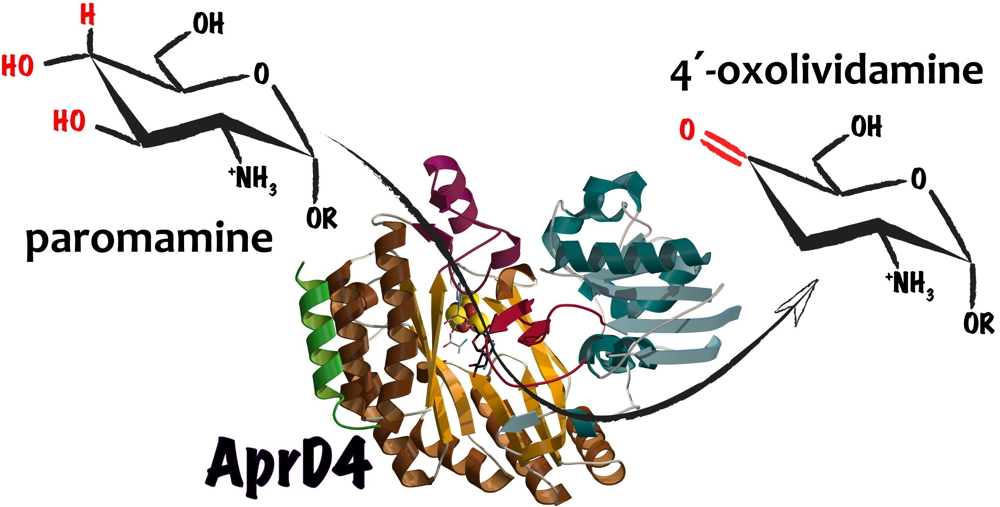New sources of antibiotics are required to fight against multidrug-resistant pathogens. Natural product biosynthetic pathways are a vast source of inspiration to develop new efficient and environment-friendly chemical synthesis processes. Radical-based chemistry, using high-energy intermediates can afford difficult reactions in water. ‘Radical SAM’ enzymes control such intermediates to perform regio- and stereo-specific reactions.
The crystal structure of the radical SAM 1,2-diol dehydratase AprD4, determined by the Metalloproteins unit at IBS in collaboration with the group of Pr. Qi Zhang at Fudan University (Shanghai, China), has revealed that the remarkable tridimensional arrangement at its active site, while keeping substrate-specificity, gives the radical intermediate enough freedom to adopt different conformations, in order to release a specific water molecule. This modification makes certain aminoglycoside antibiotics insensitive to the most common mechanisms of resistance toward this family of antimicrobial agents.
